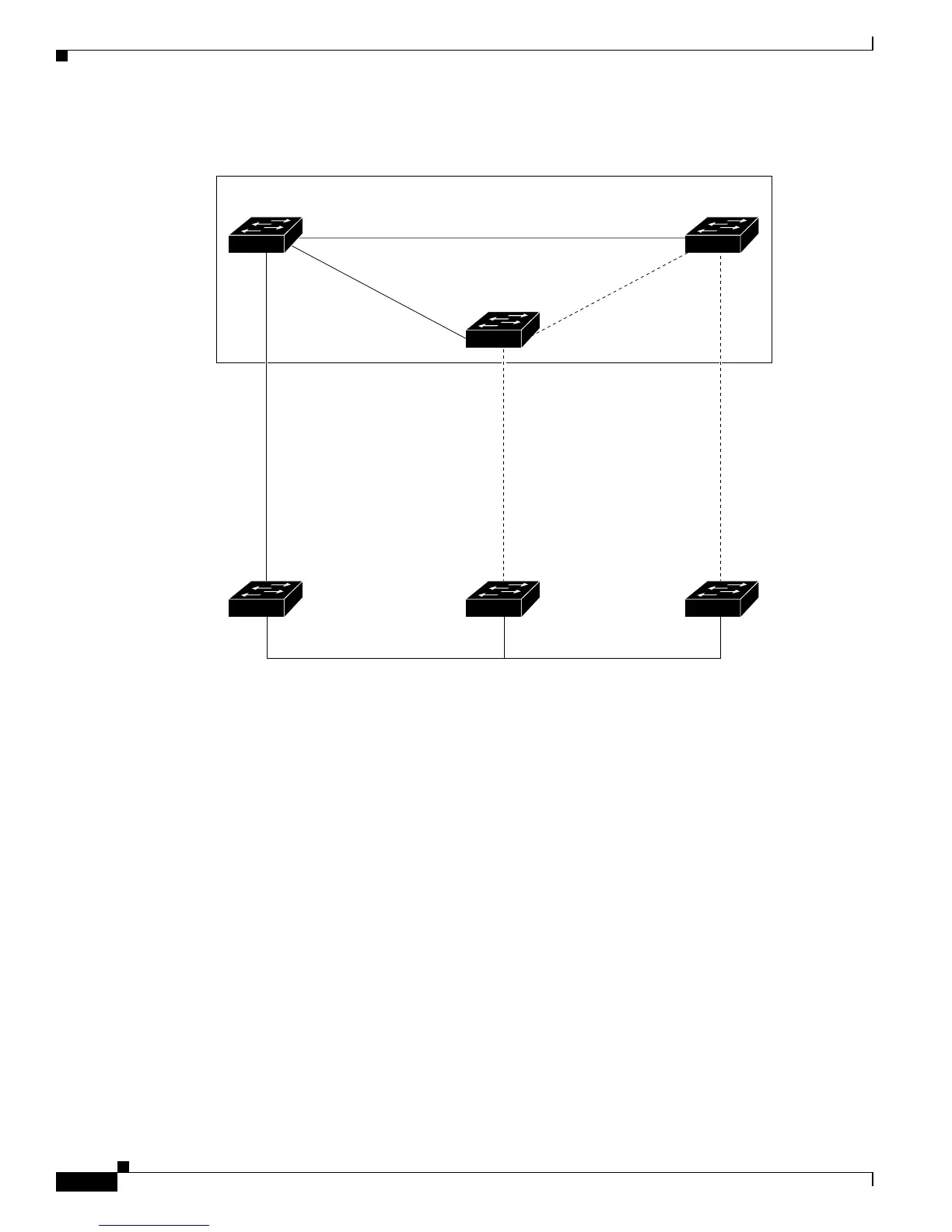16-6
Catalyst 2950 and Catalyst 2955 Switch Software Configuration Guide
78-11380-10
Chapter 16 Configuring Optional Spanning-Tree Features
Understanding Optional Spanning-Tree Features
Figure 16-5 Cross-Stack UplinkFast Topology
CSUF uses the Stack Membership Discovery Protocol to build a neighbor list of stack members through
the receipt of discovery hello packets. When certain link loss or spanning-tree events occur (described
in “Events that Cause Fast Convergence” section on page 16-7), the Fast Uplink Transition Protocol uses
the neighbor list to send fast-transition requests on the stack port to stack members.
The switch sending the fast-transition request needs to do a fast transition to the forwarding state of a
port that it has chosen as the root port, and it must obtain an acknowledgement from each stack switch
before performing the fast transition.
Each switch in the stack determines if the sending switch is a better choice than itself to be the stack root
of this spanning-tree instance by comparing the root, cost, and bridge ID. If the sending switch is the
best choice as the stack root, each switch in the stack returns an acknowledgement; otherwise, it does
not respond to the sending switch (drops the packet). The sending switch then has not received
acknowledgements from all stack switches.
When acknowledgements are received from all stack switches, the Fast Uplink Transition Protocol on
the sending switch immediately transitions its alternate stack-root port to the forwarding state. If
acknowledgements from all stack switches are not obtained by the sending switch, the normal
spanning-tree transitions (blocking, listening, learning, and forwarding) take place, and the
spanning-tree topology converges at its normal rate (2 * forward-delay time + max-age time).
The Fast Uplink Transition Protocol is implemented on a per-VLAN basis and affects only one
spanning-tree instance at a time.
Switch A
Spanning-
tree root
Backbone
Multidrop backbone
(GigaStack GBIC connections)
Stack port
49067
Switch B
Stack port
Forward
Link A
(Root link)
Link B
(Alternate
redundant
link)
Link C
(Alternate
redundant
link)
100 or 1000 Mbps 100 or 1000 Mbps 100 or 1000 Mbps
Forward
Forward
Switch C
Stack port
Stack-root port
Alternate stack-
root port
Alternate stack-
root port
